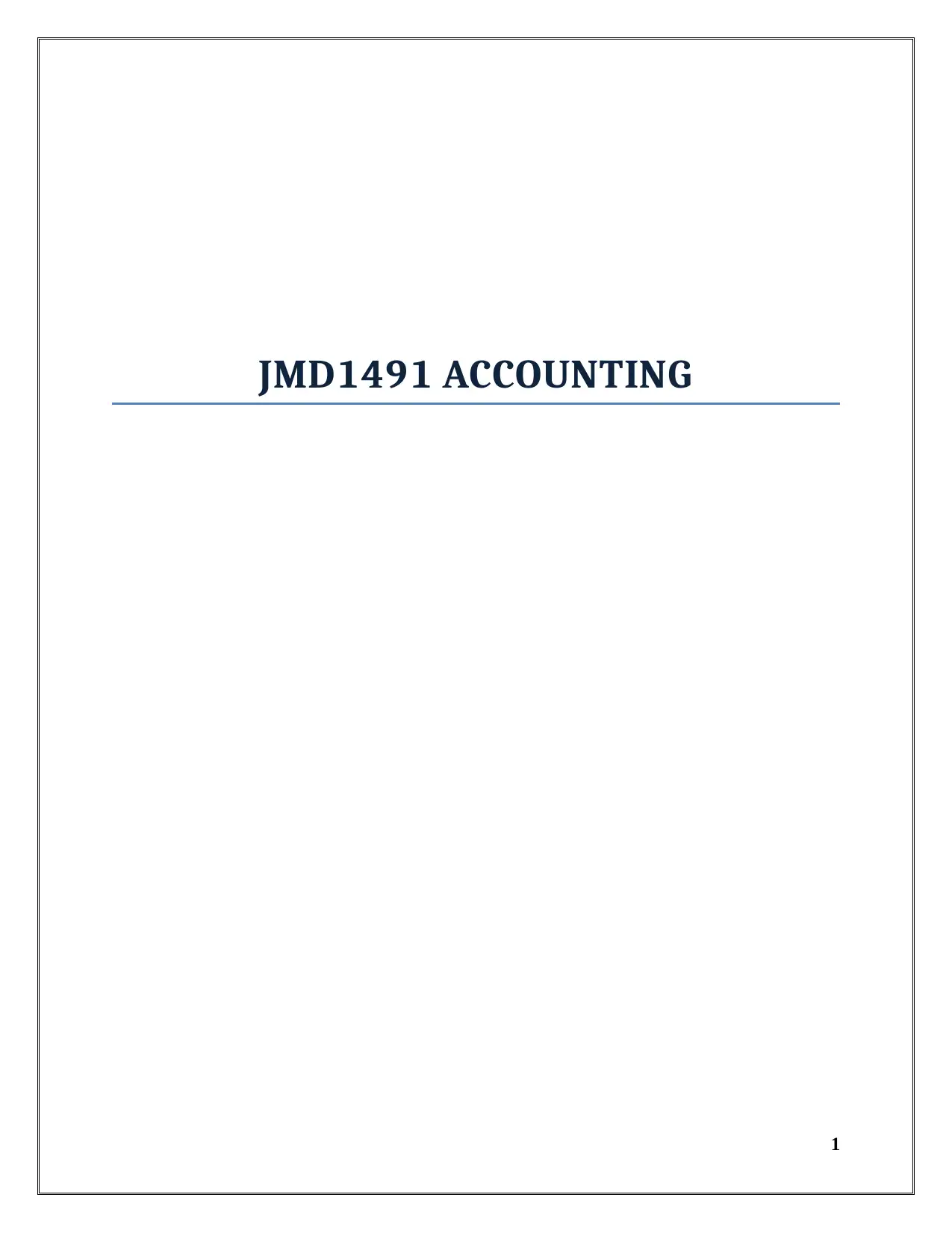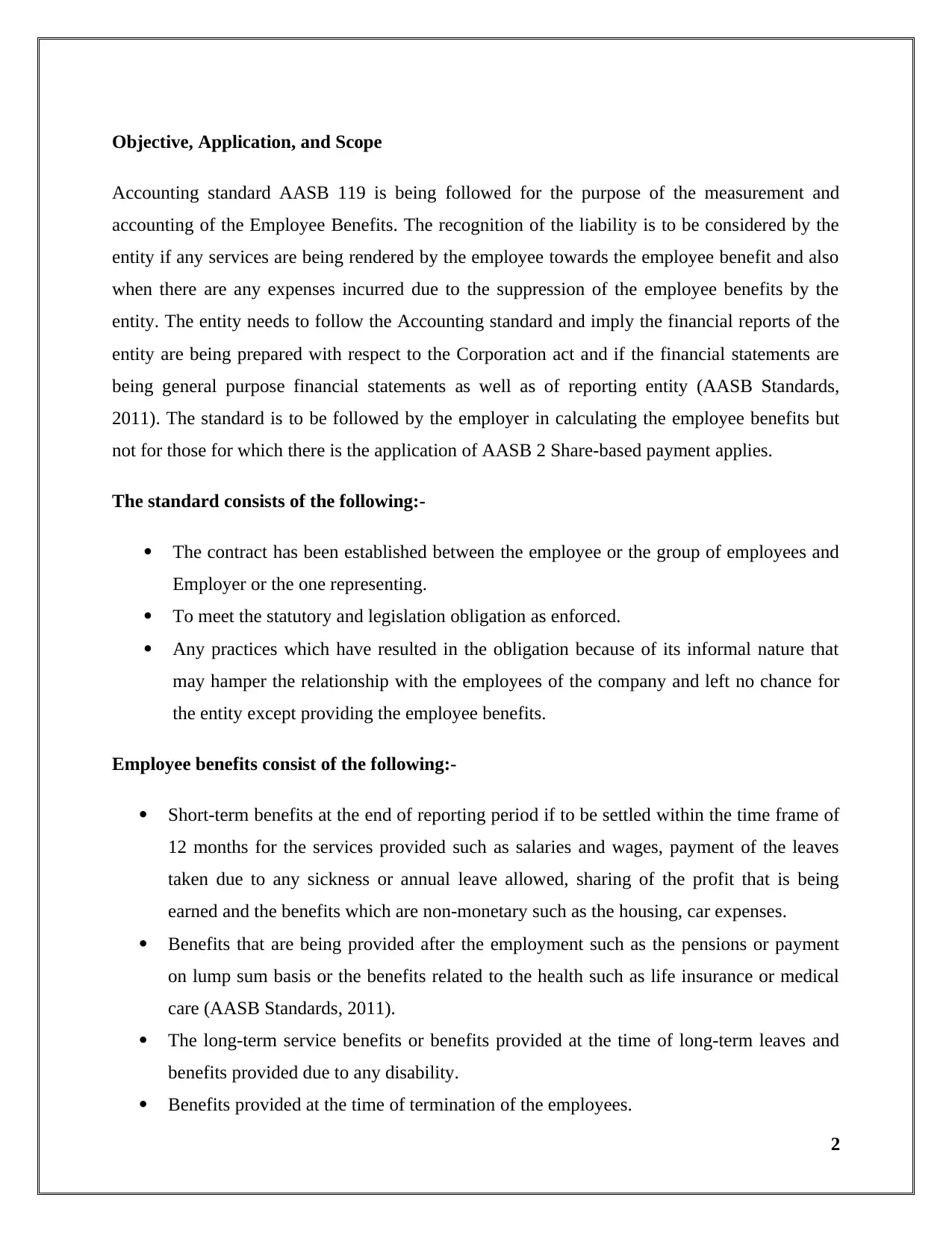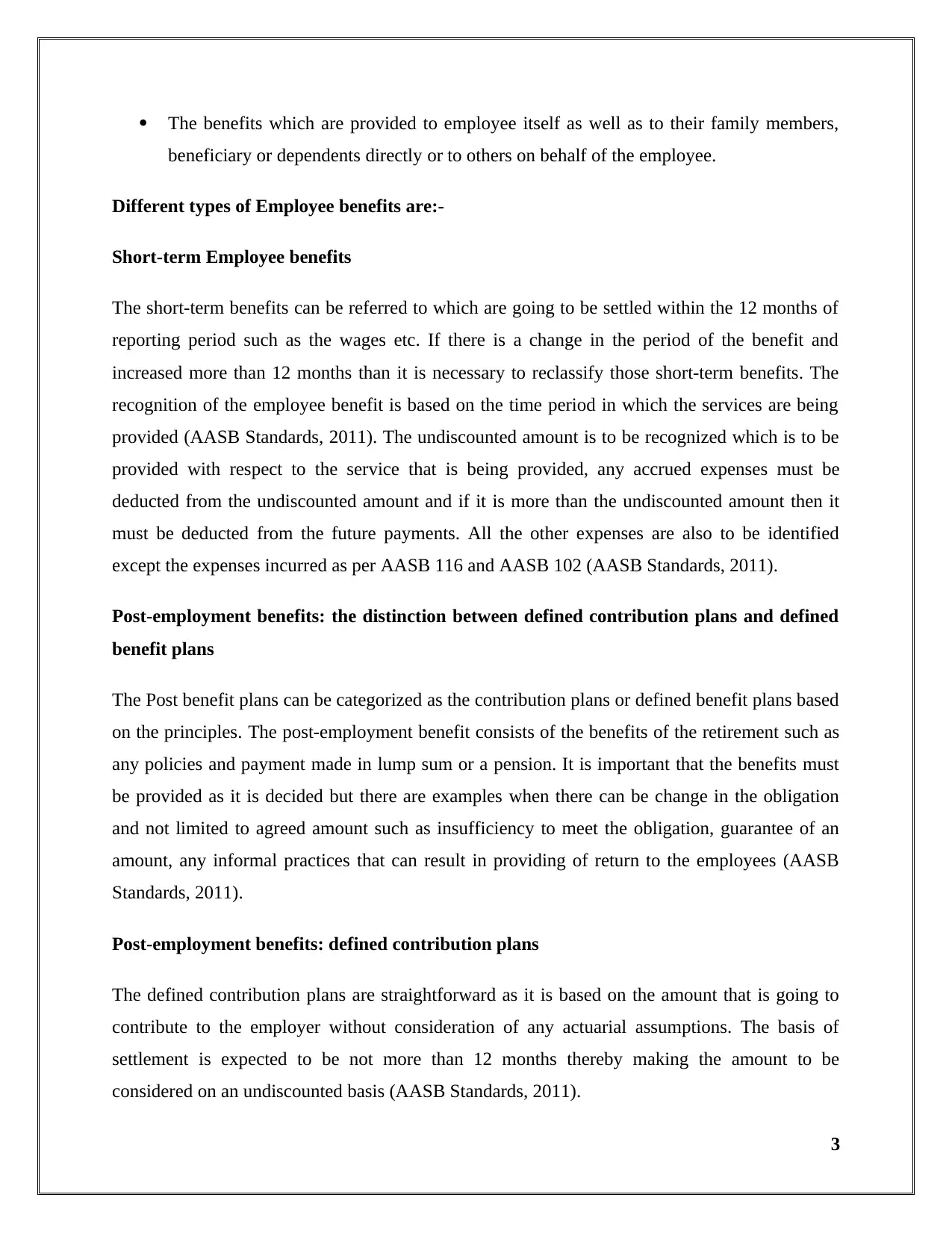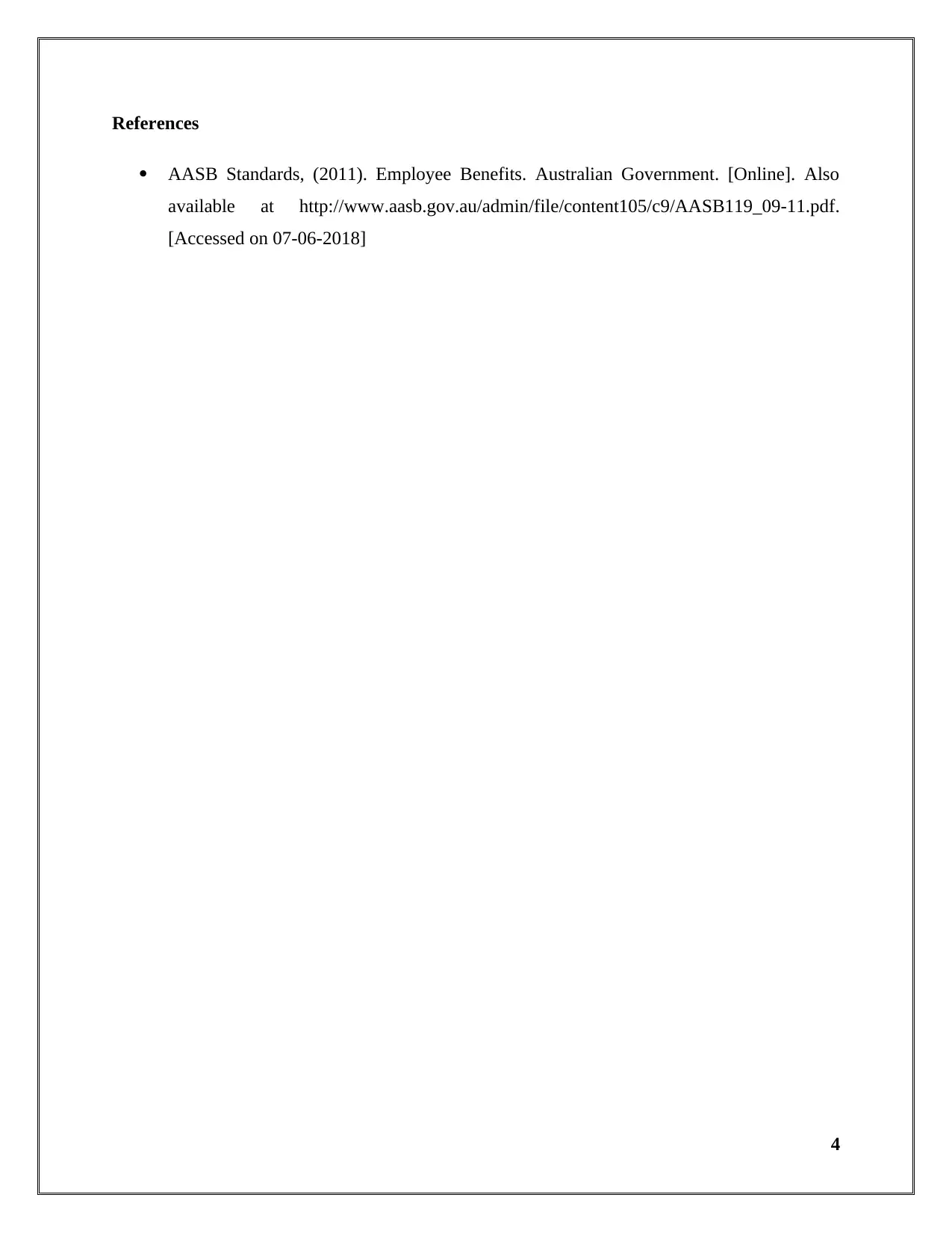Detailed Report on Accounting for Employee Benefits Under AASB 119
VerifiedAdded on 2024/06/05
|4
|795
|219
Report
AI Summary
This report provides a detailed overview of accounting for employee benefits in accordance with AASB 119. It covers the objective, application, and scope of the accounting standard, emphasizing the recognition of liabilities and expenses related to employee benefits. The report distinguishes between short-term and post-employment benefits, including defined contribution plans and defined benefit plans, outlining the accounting treatment for each. It also addresses the importance of adhering to the Corporation Act and preparing general-purpose financial statements. Furthermore, it discusses the criteria for recognizing employee benefits, such as contractual obligations and informal practices that create obligations for the entity. The analysis is supported by references to AASB standards, ensuring a comprehensive understanding of the accounting requirements for employee benefits.
1 out of 4











![[object Object]](/_next/static/media/star-bottom.7253800d.svg)